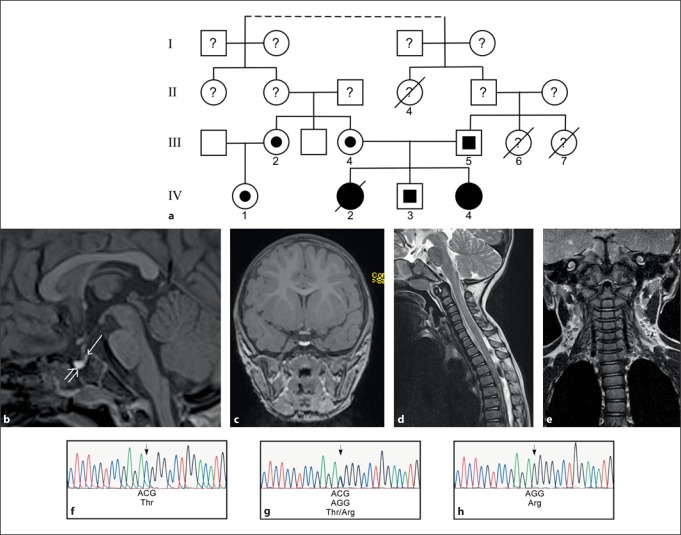Fig. 1.
DNA analysis reveals a homozygous mutation in the LHX3 gene in patients with CPHD. a Pedigree of the affected family. Filled symbols indicate patients with homozygous genotype. Half-filled symbols denote heterozygous individuals. A line through a symbol indicates that the subject is deceased. The dotted line indicates a family connection four or five generations back from the index patient (IV4). b A 3-Tesla MRI of patient IV4 reveals an absent or severely hypoplastic anterior pituitary gland. The anterior part of the sella is filled with a cystic structure with high signal intensity in non-enhanced T1-weighted sequence (open arrow) and a reduced signal intensity in T2-weighted sequences (not shown), most likely corresponding to a cyst with high protein content. The posterior pituitary gland is found in an orthotopic location (arrow). c Coronal view. d, e A T2-weighted sequence of the cervical spine demonstrates a reduced cervical lordosis with slight kyphosis of the vertebral bodies in segment C2 to C5. f-h DNA sequencing reveals a C to G mutation in the LHX3 gene altering a threonine (Thr) to an arginine (Arg) (f control; g III4 (mother of patient IV4 with heterozygous genotype); h patient IV4).

